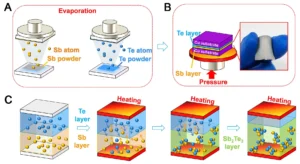Lasers have revolutionized various fields, from medicine and communication to manufacturing and entertainment. Central to their operation are two key concepts: population inversion and the resonance cavity. These principles are critical in understanding how lasers work and why they are so effective. In this blog, we will explore these concepts in detail, shedding light on their roles and significance in laser technology.
1. Introduction to Laser Technology

The term “laser” stands for Light Amplification by Stimulated Emission of Radiation. Lasers produce coherent, monochromatic, and highly focused beams of light. The process of laser light generation involves stimulating atoms or molecules in a medium, causing them to emit photons in a controlled and amplified manner. To understand how this works, we must dive into the concepts of population inversion and the resonance cavity, which are the foundational elements of laser operation.
2. What is Population Inversion?
In most materials, the atoms or molecules typically exist in a state where more of them occupy the lower energy levels than the higher ones. This is known as the Boltzmann distribution. Under normal conditions, when atoms are in their ground state or lower energy levels, they do not emit light, as they are not in an excited state.
For a laser to function, however, light amplification must occur. This requires the atoms or molecules in the material to be in an excited state, where they are ready to emit photons. Population inversion is a critical condition in which more particles (atoms or molecules) occupy a higher energy level than the lower one. It is this imbalance that makes the process of stimulated emission possible, leading to laser light generation.
How Does Population Inversion Work?
Population inversion is achieved through pumping, which involves supplying energy to a medium (usually gas, liquid, or solid) to excite its atoms. This can be done using an electrical current, another light source, or chemical reactions. When a sufficient amount of energy is pumped into the material, a significant proportion of atoms or molecules are promoted to higher energy levels.
For instance, in a gas laser, an electrical discharge can excite the gas atoms, pushing many of them into higher-energy states. When more atoms occupy these higher-energy levels than the ground state, population inversion occurs.
Challenges of Population Inversion
Achieving population inversion is a difficult and energy-intensive process because it goes against the natural tendency of particles to occupy lower energy states. Moreover, the material must be chosen carefully to support population inversion, and the energy source must provide a sufficient level of excitation to maintain this inversion.
In practice, population inversion is often maintained in laser systems with optical pumping, electrical pumping, or chemical reactions that provide sustained energy to the medium.
3. The Role of the Resonance Cavity in Lasers
Once population inversion is achieved, the next critical component of a laser system is the resonance cavity (or optical cavity). This cavity plays a pivotal role in ensuring that the light emitted by the excited atoms is amplified and coherent.
What is a Resonance Cavity?
The resonance cavity is essentially a pair of mirrors placed at opposite ends of the laser medium. These mirrors reflect light back and forth through the medium, causing the photons to interact with the excited atoms or molecules multiple times. This multiple reflection process amplifies the light, as each photon that passes through the medium stimulates more emissions from excited atoms, generating more photons of the same frequency, phase, and direction.
Structure of the Resonance Cavity
A typical laser resonance cavity consists of the following components:
- The Active Medium: This is the material in which population inversion occurs. It can be a gas (like CO2 or neon), a liquid (such as dye), or a solid (like a semiconductor or a crystal).
- Two Mirrors: The mirrors at either end of the cavity serve to reflect light. One of the mirrors is typically highly reflective, while the other is partially reflective, allowing a small amount of light to escape as the laser output.
- Optical Elements: In some advanced laser systems, additional components like prisms, lenses, and optical fibers are added to control the light’s path, focus, or direction.
Working Principle of the Resonance Cavity
When the excited atoms in the laser medium undergo stimulated emission, they emit photons that travel in various directions. The mirrors in the resonance cavity reflect the photons back into the medium, leading to further stimulated emissions. This process continues, and as the photons bounce back and forth through the medium, they grow in number and coherence.
The photons inside the cavity are amplified, and the resulting light becomes highly monochromatic (of a single wavelength) and coherent (having a constant phase relationship). Eventually, the light builds up enough intensity to escape the cavity through the partially reflective mirror, forming the laser beam.
4. Interaction Between Population Inversion and Resonance Cavity
Population inversion and the resonance cavity are closely interrelated in the operation of a laser. The role of population inversion is to create a situation where stimulated emission is more likely than absorption, and the resonance cavity ensures that the emitted light is amplified.
- Without population inversion, even with a resonance cavity, no meaningful light emission would occur because there would not be enough excited atoms to stimulate more emissions.
- Without the resonance cavity, even with population inversion, the emitted photons would disperse and lose coherence, preventing the creation of a concentrated and focused laser beam.
Therefore, both components are crucial for achieving the laser effect—the generation of a coherent, monochromatic, and intense beam of light.
5. Types of Lasers and Their Resonance Cavities
Lasers come in various types, each with its own resonance cavity configuration and active medium. The most common types include:
- Gas Lasers: These include lasers like the He-Ne laser (helium-neon), where a mixture of helium and neon gas is used as the medium. These lasers are often used in research and barcode scanners. The resonance cavity here is typically a simple tube with mirrors at each end.
- Solid-State Lasers: An example is the ruby laser, which uses a solid ruby crystal as the active medium. Solid-state lasers generally have a more complex cavity system with added optical components to focus and control the emitted light.
- Semiconductor Lasers (Diode Lasers): These lasers use semiconductor materials, such as gallium arsenide, as the medium. The cavity is typically very small, and the laser light is emitted directly from the semiconductor junction. These are commonly used in consumer electronics like laser pointers and CD players.
Conclusion
Population inversion and the resonance cavity are two fundamental concepts that make laser technology possible. Population inversion ensures that a sufficient number of atoms or molecules are in excited states, ready to emit photons through stimulated emission. The resonance cavity, composed of mirrors and the active medium, facilitates the amplification and coherence of these photons, resulting in a powerful and focused beam of light. Together, these elements form the backbone of all laser systems, from industrial lasers to medical devices, enabling lasers to play an essential role in modern technology and science.
As we continue to innovate and improve laser systems, understanding these key principles will remain critical in developing more efficient, powerful, and versatile lasers for diverse applications in the future.




